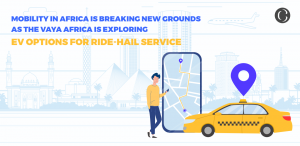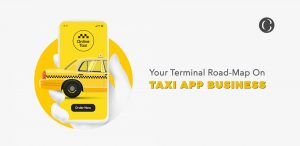3 Innovative, Future-Ready, and Profitable Business Models for the Taxi Booking App Business

Is Uber earning well? – Hell Yeah!
Will Uber keep earning well? – Maybe not!
News of a new big funding round ($42 million) which was seized by an Egypt-based Uber-like service providing company named Swvl has loused up Uber’s ambition to dominate the whole African taxi industry.
When Uber was launched in 2010, it quickly dominated the market of many continents.
But with the advent of advanced yet keenly priced taxi app development solutions, more and more entrepreneurs jumped into the online taxi booking industry with Uber-like apps.
Though the idea of their business and business model were inspired by Uber, their competitive analysis practice which is nothing but a technique to find areas of improvement of competitors and delivering more satisfying service than competitors, helped them to acquire customers faster.
In fact, some new taxi booking app providing companies are growing faster than Uber.
In this blog, we will get to know top Uber-like taxi app providing companies which don’t work like Uber.
We will also study the different business models you can opt for and how much does it cost to develop a taxi app.
But first, let’s get our head around some facts about the online taxi booking industry.
How big online taxi booking industry is?
• In 2017, ridesharing apps surpassed the regular yellow-taxis in New-York city.
• Uber is one of the most successful online taxi service providers. It owns 75 million riders and 3 million drivers across 600 cities in 65 countries.
• Lyft is Uber’s biggest rival. Both Uber and Lyft combined posed almost 98 percent of the US online taxi booking market.
• New companies are putting extra emphasis on safety and so, they hire professional and insured drivers.
• Another online taxi service providing company named Taxify operates in 30 countries and has more than 15 million users registered. In fact, It has more users in Africa than Uber.
• Mytaxi provides its services in 9 European countries with 100,000 licensed taxi drivers.
• According to Business Traveller, in 2019, the global online taxi booking industry that sprang up from nowhere is valued at $61.3 billion and expected to grow to around $220 billion by the end of 2025.
Top latest alternatives of Uber, their services, and their funding details
• Swvl
Swvl is the Egypt, Cairo-based Uber-like app providing company that is letting people book vans and buses through a mobile app.
It was founded in 2017 by three very young yet experienced entrepreneurs Mostafa Kandil, Ahmed Sabbah, and Mahmoud Noah who have previously worked in top companies like Careem, Google, Uber, Quora, Rocket Internet, and DeliveryHero.
Unlike Uber, they are having a fleet of buses and vans which run on the fixed route and on the fixed time.
To utilize this best alternative of public transport, users just need to add the destination address and select the time and route in the mobile app.
According to the co-founder Mostafa, university students and corporate employees are their major user groups.
Moreover, a lot of women are also making the most of Swvl as in Egypt, traveling in public transport for women isn’t as safe as in other countries.
In their Series A of the funding, they have raised $8 million from BECO Capital, Arzan VC, Oman Technology Fund, and Global VC fund Silicon Badia.
That was the biggest round of funding for a startup in Egypt.
Recently, in another funding round, they have raised $42 million from Sweden’s Vostok, Dubai-based BECO, China-based MSA, and New-York-based Endeavor Catalyst.
• Safe Boda
Safe Boda is the Uganda-based motorcycle taxi service provider, allowing users to request a motorcycle taxi through the app.
It was founded by Alastair Sussock, Maxime Dieudonne, Ricky Rapa Thomson in 2015.
In developing countries like Uganda, Uber seems a costly choice for people and so, Safe Boda which is an inexpensive and swift alternative to Uber managed to acquire enough users to be profitable.
Sensing the government’s concern over the rider’s safety, Safe Boda pays extra heed to safety. Every driver of the Safe Boda is trained and armed with an extra helmet with hairnet for the rider.
Operating business in one of the major financially underdeveloped countries, raising $1.1 million from investors like Allianz X, GoJek and Global Innovation Fund is a thrilling moment for Safe Boda, in fact for any company!
• Grab
Grab is a Singapore-based transportation network company that was founded in 2012 by Anthony Tan and Tan Hooi Ling.
Grab provides a multi-purpose app that is equipped with multiple services like taxi booking, food ordering, and payment.
Currently, Grab is operating its business in Southeast Asian countries.
Grab is the ‘decacorn’ company with a valuation of over $10 billion. In its first funding round in 2014, Grab raised $10 million, and in its latest funding round, Grab has raised $200 million.
The following image clearly depicts the funding journey of Grab.
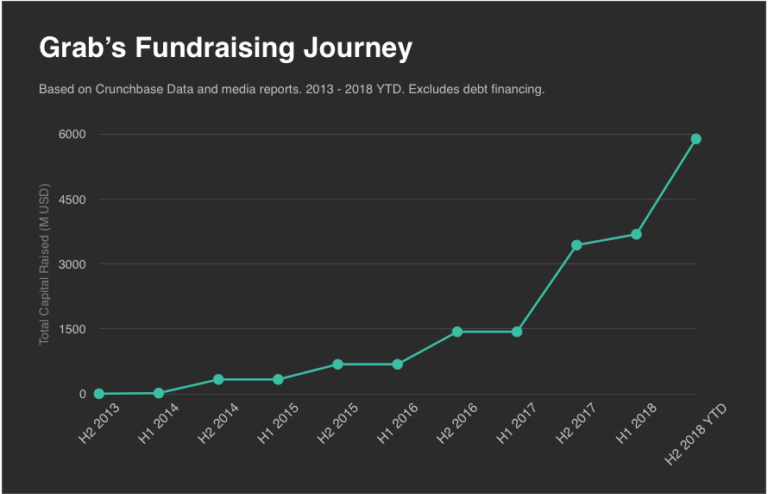
If you have made it so far, you must have spotted that we have discussed three different ways of kicking off an Uber-like taxi business.
So, now we will summarise these three sub-categories of Uber-like taxi business in three different business models.
Three different profitable business models to keep in mind while developing a taxi booking app for your taxi booking service business
Deciding the business model is perhaps the most fundamental requirement to start the taxi booking app business and it is a tricky process.
In order to achieve a successful business or revenue model, you have to study your available resources and requirements and then connect many dots to get the first glimpse of a profitable business model.
Thus, before reading further, make sure you have a clear idea about the resources you have and the requirements you will satisfy with those resources.
1) The old-school business model
A Harvard professor Yochai Benkler first introduced the concept of a sharing economy in 2002. However, none of the companies had accepted it, except Uber!
In 2010, when Uber was officially launched, it exhibited the most profitable business model.
It is so profitable that even in 2019, Uber is following the same business model with a few minor changes. It includes,
• Gig workers
Uber allows anyone to be a driver by just registering and submitting a police check report.
But the catch here is, the drivers who are registered on the Uber are responsible for the car, maintenance, and even fuel.
They are the independent contractors who can work on the Uber platform on their time and get paid based on their work.
This way, Uber is cutting down the million dollars of internal cost and operating a taxi service business without purchasing a single taxi!
• Surge pricing
Though surge pricing is a very controversial feature, we encourage you to integrate it into your taxi booking app as it changes the fare dynamically by analyzing several factors like weather, local event, traffic, and demand.
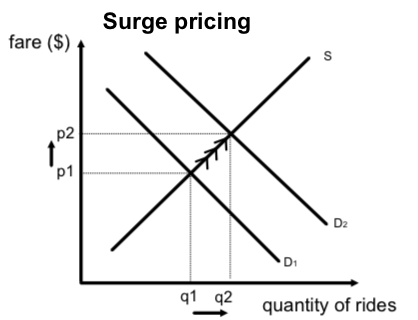
• Different vehicles for different user groups
Customer segmentation is one of the most important practices a new startup has to follow.
It presents the characteristics of your users. So that you can offer them pocket-friendly or premium service based on their characteristic.
Uber and other taxi booking app providers are providing more than one type of vehicle for different users.
For Example, Uber’s UberGo is an economical service for daily commuters and students.
Whereas, Uber’s Uber-Black service was introduced for premium users.
Refer to the following table to know how customer segmentation and different services can help you to earn more.
| Services | Number of employees | Number of rides | Base price | Revenue per employee |
| 100 | 100 | $25 | $25 | |
| 100 | 100 | $60 | $60 |
2) A very new taxi service business model
As we have discussed, Uber’s old-school business model is still profitable. However, with the advent of many new taxi booking apps, the market has intensified.
So, entrepreneurs who want to jump into an already explored online taxi booking industry with a new taxi booking app have to recalculate and redesign the revenue model.
They need to change the way they want to deliver on-demand taxi service and to whom they want to deliver service.
For example, many new taxi booking service providers are now introducing buses, vans, boats, and motorcycles into their fleet with the highest ever safety standards to meet different user demands in different regions.
And finally,
3) The business model of future
On-demand taxi service is the subcategory of the transportation business. Now think, which are the other sub-businesses of the transportation business? – food delivery, courier delivery, grocery delivery, Right? So, what about integrating all these services in a single app?!
It will save your bucks on mobile app development, generate more revenue streams and you will manage to acquire more customers than the typical single-purpose app.
Here, it is worth mentioning that Uber is also slowly adopting this new business model by launching grocery and prescription delivery services during the pandemic.
A business model canvas of taxi apps like Uber
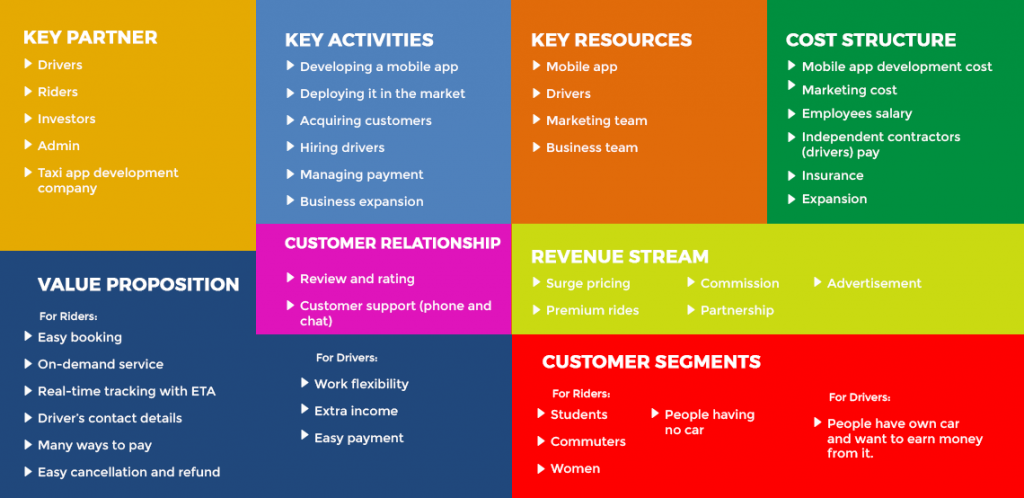
A single-purpose app won’t work in 2021. Launch a super taxi app (single app, multiple services)
You must have heard about the Go-Jek app that provides more than 25 on-demand services from a single app.
Can you imagine Go-Jek providing a single service from its app and raising $400 in a single funding round?
Due to the virus crisis, consumer behavior has changed dramatically. They now want everything delivered to their doorstep.
Since with a taxi app, you would already have logistics resources, you can accommodate courier, food & grocery delivery services without shouldering any burden.
Recently, sensing the challenges the taxi industry has been facing, our innovation team has engineered a taxi + courier delivery app platform.
With this platform, you can offer a delivery service from your taxi app through the drivers registered on your app.
So far in 2020, we presented the free demo of our taxi + courier delivery platform to an average of 3 entrepreneurs daily.
And 2 out of 3 entrepreneurs are adding it to their bucket list 2021. (Because a single purpose taxi app won’t work in 2021!)



